Bzzzzzzt! We’re back in Berlin (not really, but for purposes of this narrative). Specifically in the former American sector of West Berlin at one of the largest buildings in the world: Tempelhof Airport.
If really big empty buildings are your thing, you are going to love these photos. The airport was constructed by the Nazis, who liked to make things big in expectation that people would be impressed and/or intimidated.
But who cares what the Nazis wanted. Tempelhof earned a place in history as the site of the Berlin Airlift in 1948 and 1949. In case the details of this massive humanitarian event are not at your fingertips, allow me to summarize.
The Soviet Union controlled East Germany and half of Berlin. The other half of the city was divided into American, French and British zones. Stalin was not keen on having to share Berlin and decided that if he cut off access to the west by land and water the western allies might decide that Berlin was too much trouble and would abandon it.
Not so. Led by the Americans, the allies flew supplies into West Berlin via Tempelhof. It’s hard to imagine the scale of this operation. There were three air corridors from three points in West Germany. Flights from all three landed at Tempelhof. Constantly. Around the clock.
But that wasn’t enough. So they started flying five planes at once on each route, each at a different altitude. Bad luck for you if there was rough weather at your assigned altitude.
So that give us 15 planes landing essentially concurrently, around the clock. Good thing Tempelhof is so big.
After about a year, Stalin gave up and reopened the border.
Tempelhof continued to be used, mostly for small low-cost airlines, until early in the 21st Century. Now, it’s mostly empty, but with some business tenants. Parts need repair from war damage, parts were never completed by the Nazis.

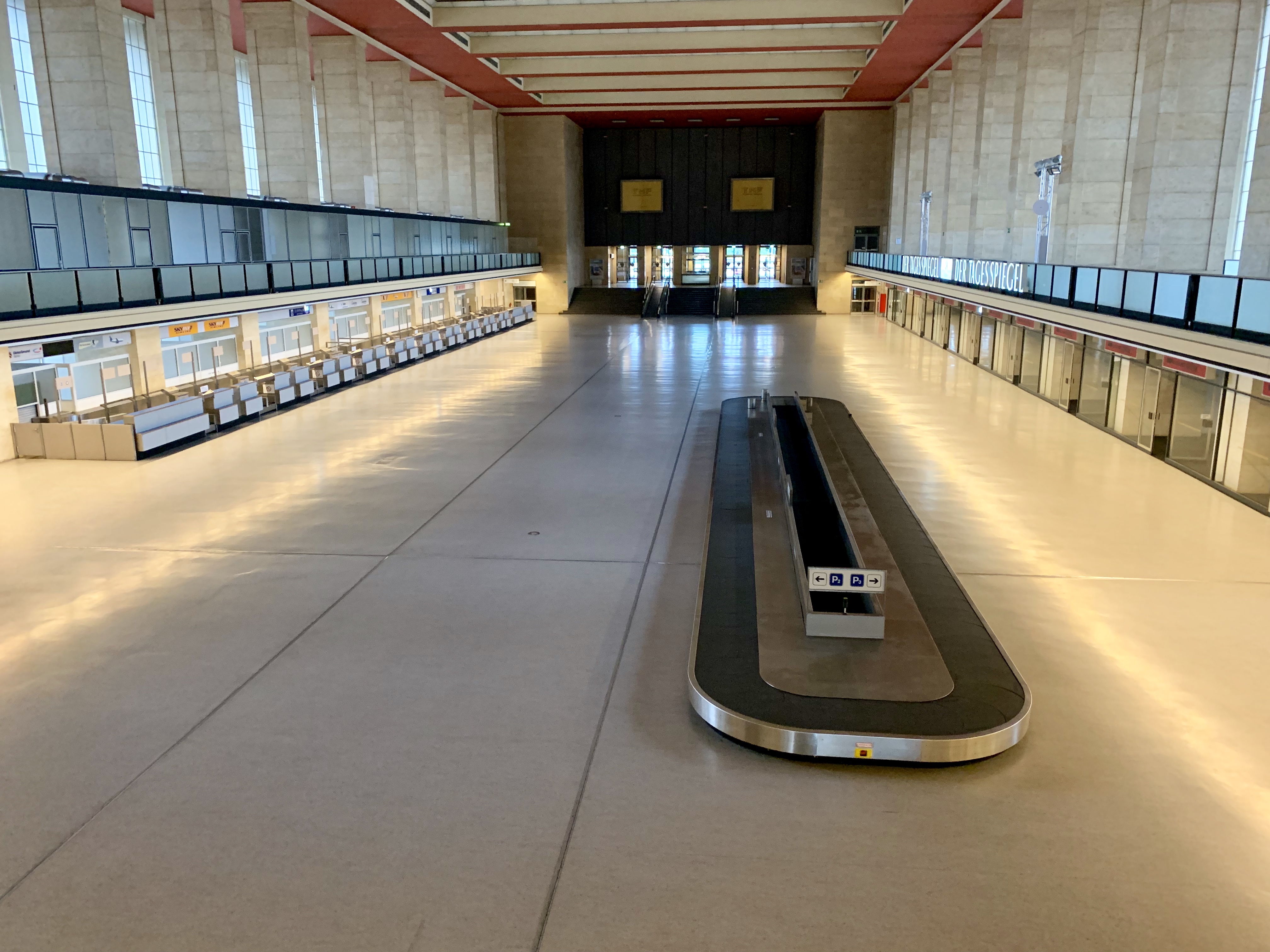
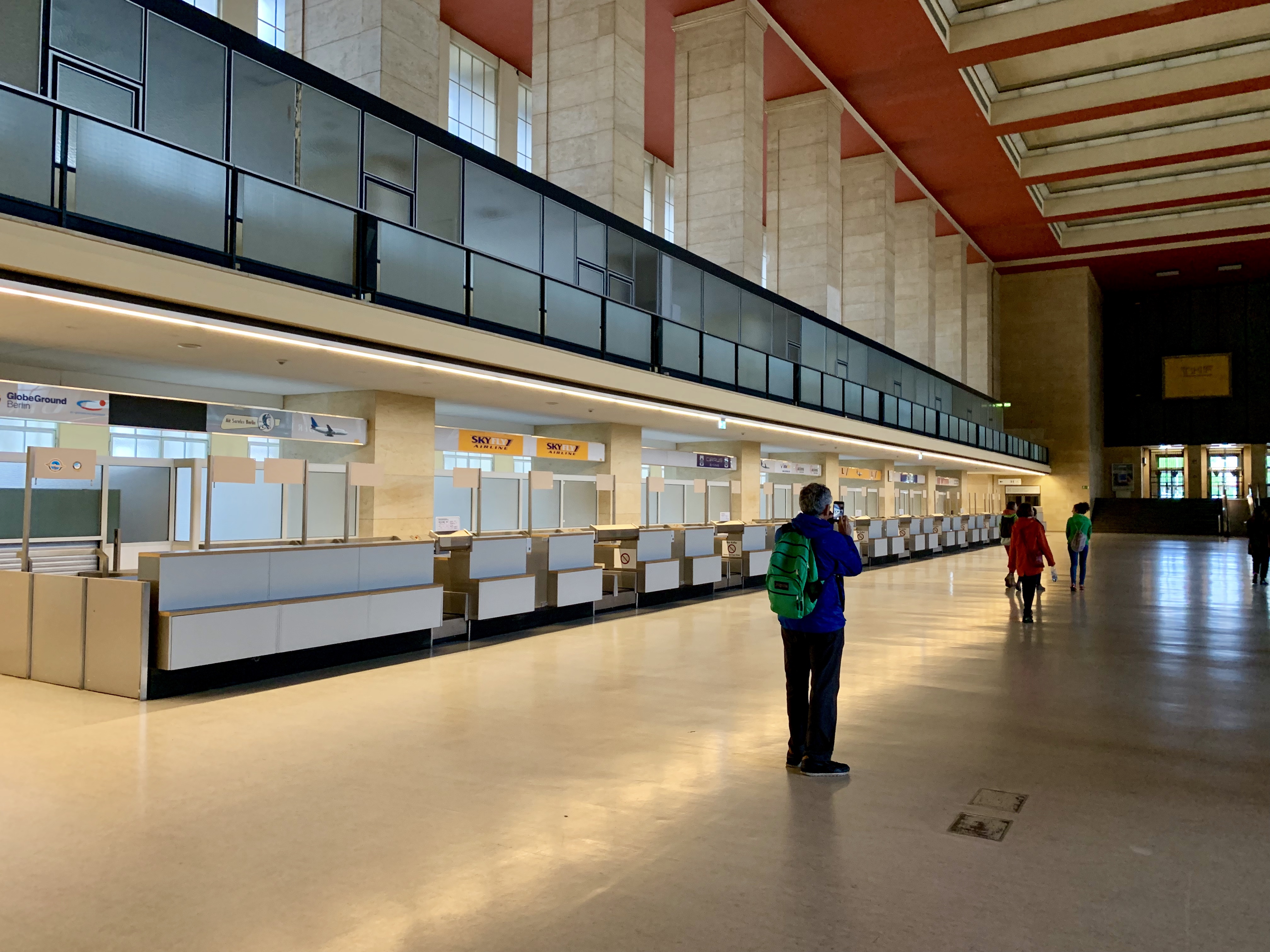

The main hall used to have a very tall ceiling. After the war, it was decided to put in a lower false ceiling rather than to repair the original. This photo was taken while standing above the hall shown in the previous photos.
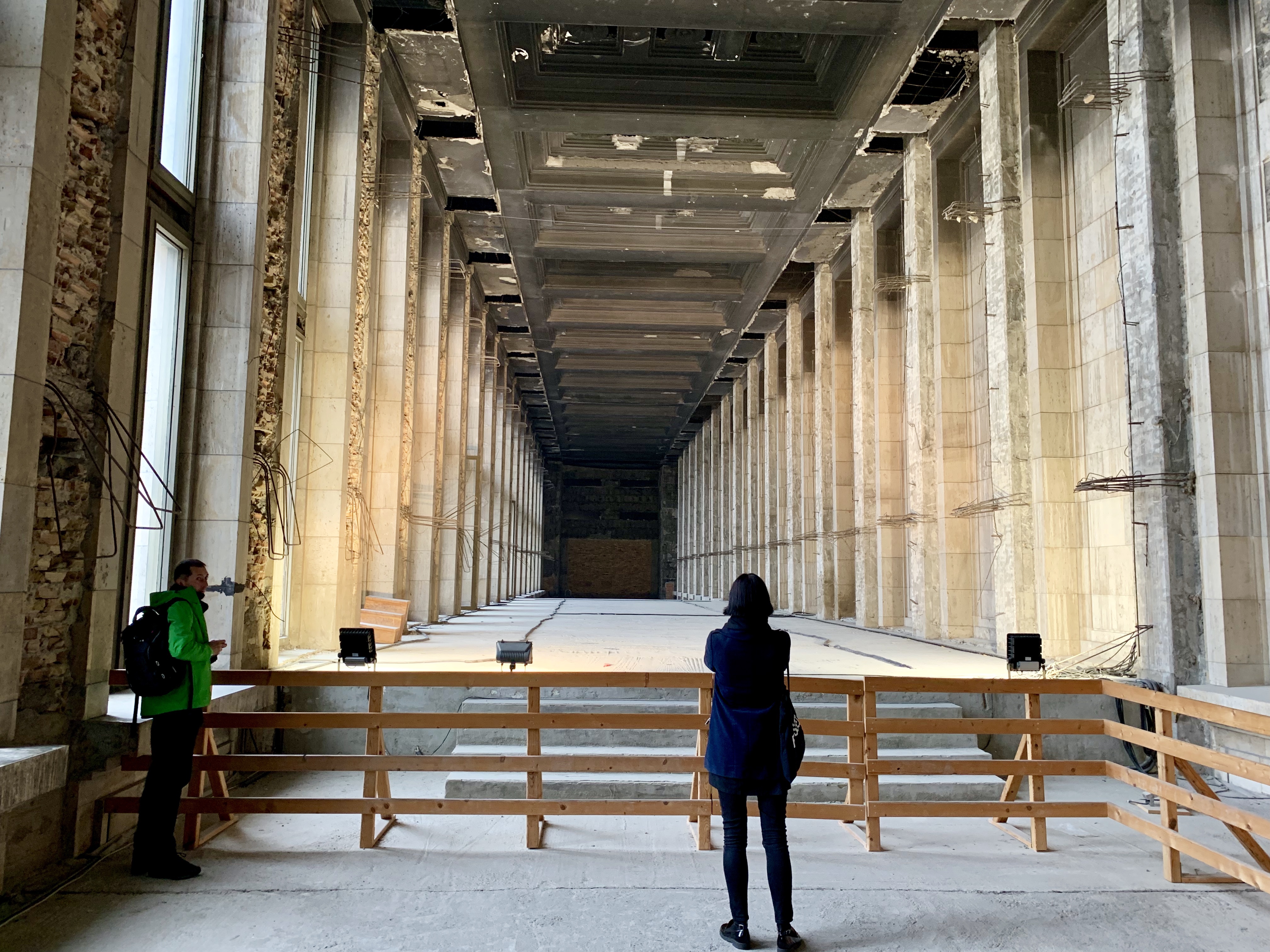
In a basement below the main hall, there were rooms where workers and local families could shelter in case of attack. The fear was not bombs, but poison gas. Elaborate air flow systems could force out any gas that penetrated the rooms.
In order to keep the children calm (or as calm as one could be under the circumstances), scenes from familiar stories were painted on the walls.

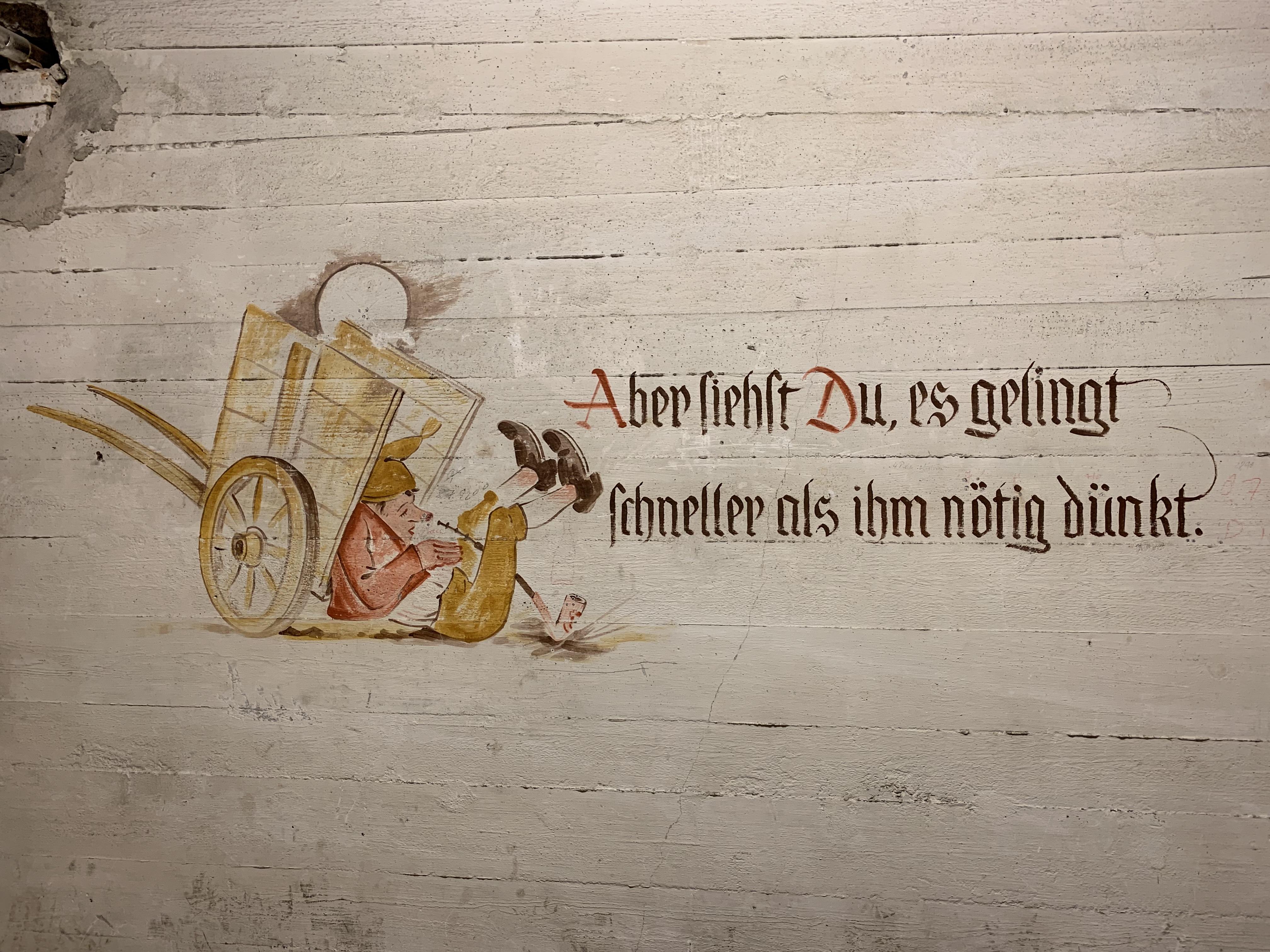
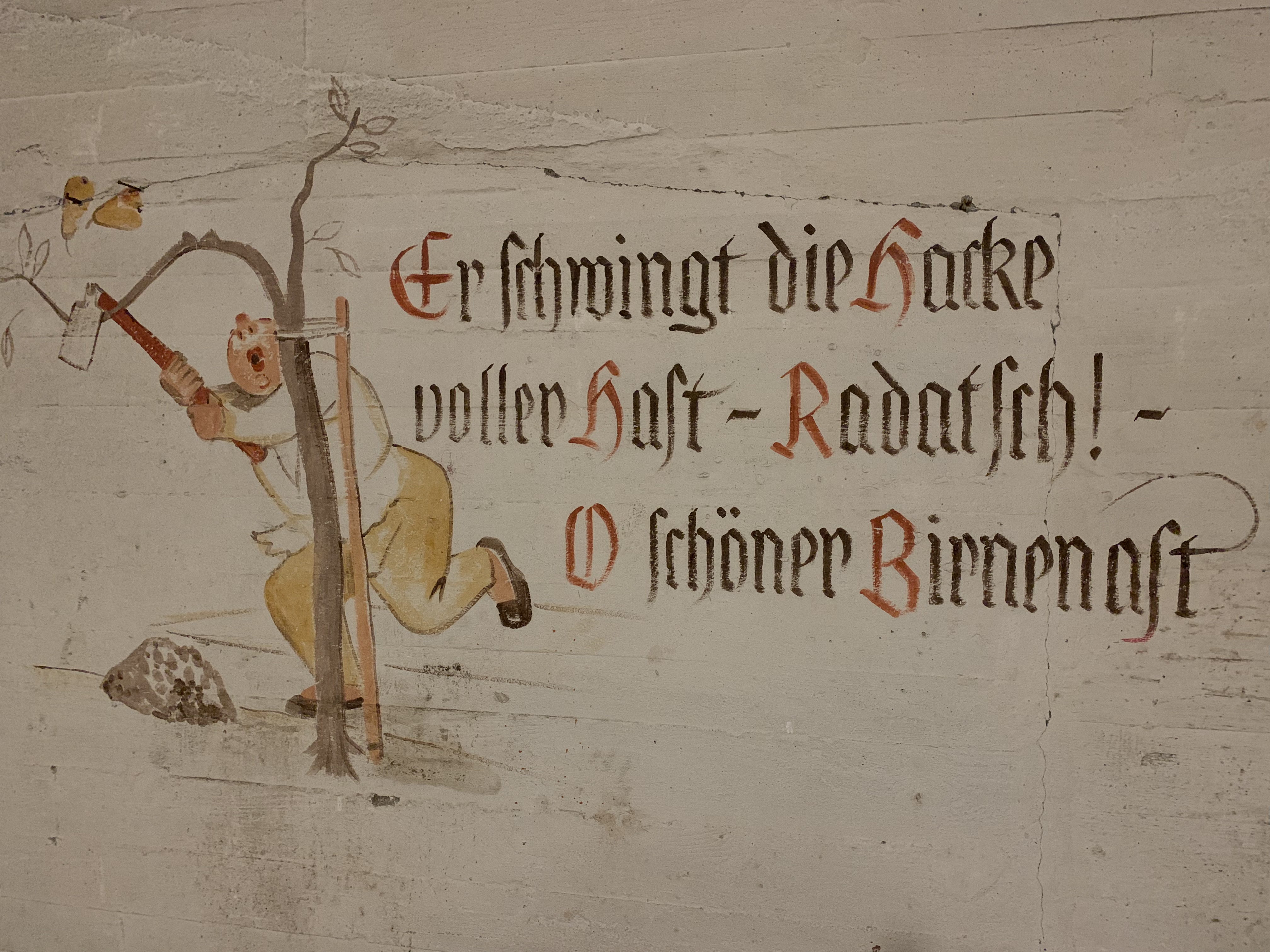
The Airlift Memorial. The three “ridges” represent the three air corridors that converged in Berlin. Flowers are from a recent ceremony honoring the seventieth anniversary of the Airlift.

